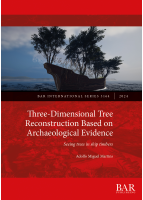Description
This research focuses on the development of digital methodologies to identify evidence of timber supply and selection for traditional shipbuilding through the examination of the archaeological ship timbers. Traditions of archaeological ship timber recording are reviewed and developed, with particular reference to the capture of information regarding the raw material (wood) used in shipbuilding, to introduce a rigorous methodology which integrates digital three-dimensional technologies increasingly employed in maritime archaeology. This approach is showcased using case studies from the Iberian Age of Discoveries, in which the author is able to analyse assemblages of surviving ship timbers and to identify correlations between woodlands, shipyards, and shipbuilding architecture. A range of digital technologies are used to allow the recording, analysis, and interpretation of surviving wood features. Data is captured using a combination of a FaroArm digitiser with Rhinoceros3D software and multi-image photogrammetry to obtain precise and accurate information.
AUTHOR
Miguel Martins is currently a senior civil servant at the Portuguese National Centre for Nautical and Underwater Archaeology. He is also a researcher at the HTC - Centre for Functional Ecology from the University of Coimbra and teaches postgraduate courses in nautical and underwater archaeology at the Autonomous University of Lisbon and the Polytechnic Institute of Tomar.
REVIEW
‘The author underlines the significance of looking at ships and their components as “living organisms” (timber is indeed an organic material) by exploring their pre-maritime context. This context can bring both shipwrights and forest dwellers to the foreground, enabling archaeologists to interpret and appreciate the link between shipbuilding and raw material.’ Dr Alessandro Ghidoni, University of Exeter
‘The methods used are quite original and constitute a new approach in that field. The technical procedure is very precisely detailed and should be much appreciated by nautical archaeological teams aiming at following it.’ Dr Frederic Guibal, Aix-Marseille Universite











